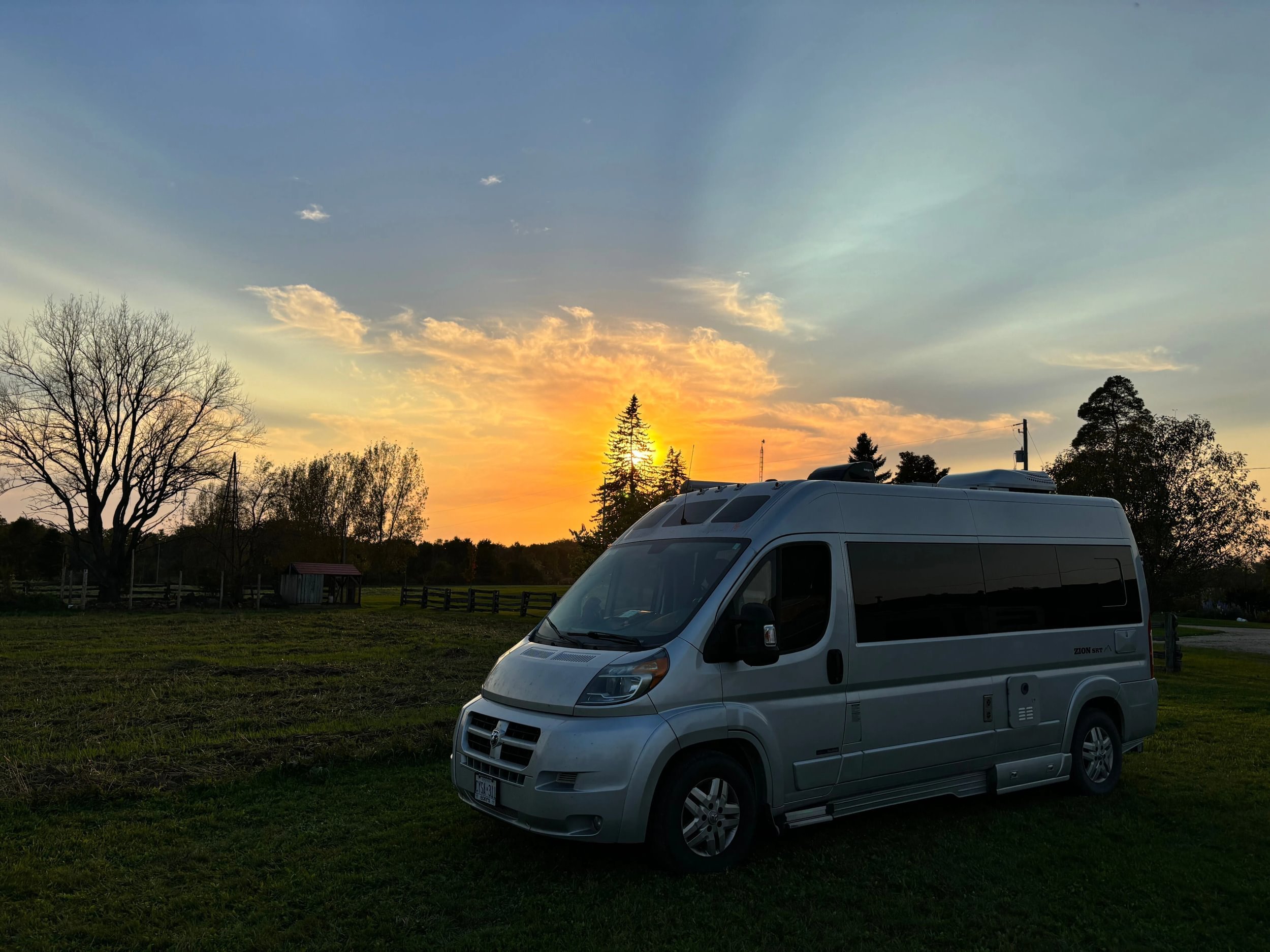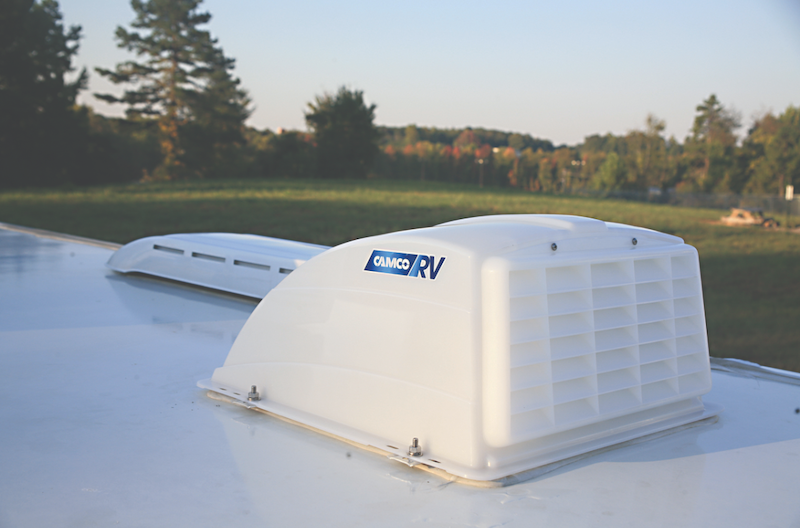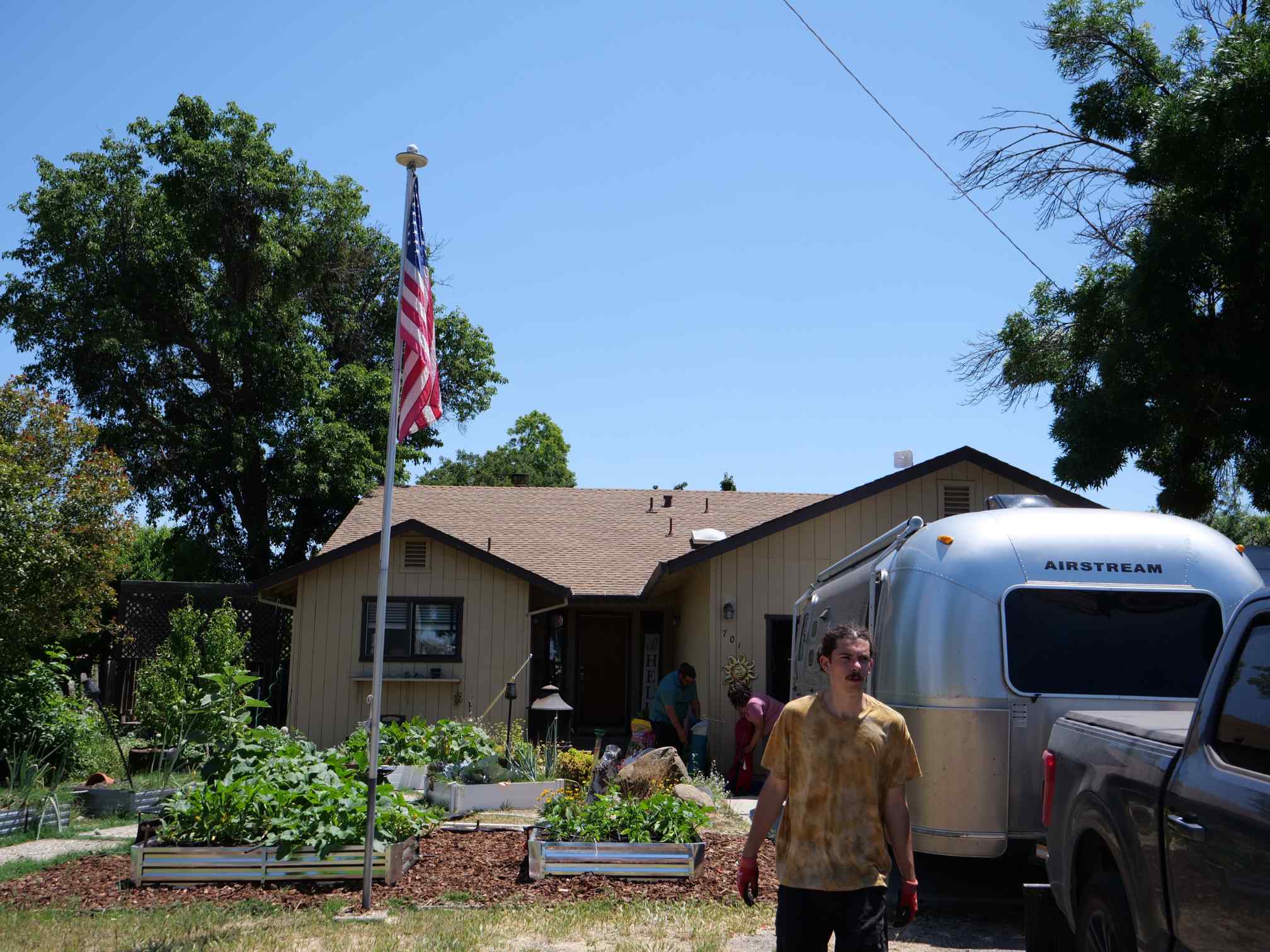Debunking Boondocking Myths, Part #3
Read Part # 1 and Part # 2 in the series (Debunking Boondocking Myths #1 through #10).
Myth #11: Boondocking off the grid means no Internet.
Many RVers count on access to the Internet through their phone’s data plan, which is dependant on the proximity of cell towers. Many of the most popular boondocking areas are not far from established routes that are lined with towers. If Internet is important, you can choose locations based on signal availability. Where the signal is poor, it’s unlikely to be much different in a nearby pay campground. Where the signal is weak, there are wi-fi boosters that work quite well to extend your reach.
While some carriers (Verizon) tend to cover more territory, there are still several dead zones across the country, especially in sparsely-populated areas. In those locations, you can generally count on the nearest public library, fast food outlet, or coffee shop for your Internet fix.
The stubby white antenna on the back roof of our Roadtrek is our wi-fi booster antenna. It makes quite a difference in boondocking locations like this.
Myth #12: Boondocking is rife with danger: bandits, rattlesnakes, and terrible road conditions.
Stepping outside the comfort and security of your home always entails increased risk. Statistically, I think you’re more likely to encounter bandits by the side of the road or in a motel parking lot on a car trip than in a boondocking location. Why would someone drive down a dirt road on the off chance there’s a boondocker out there who is worth robbing? If you’ve just arrived in new territory, they’ve had no chance to observe you and won’t know whether you might have a bigger gun or meaner dog than they do.
In 18 years of desert boondocking, we’ve seen 3 rattlesnakes and each of them was kind enough to warn us of their presence. That’s what the rattle is for. So, at no time did we feel we were in any danger of being bitten. In every case, the sighting was late in the season when daytime temperatures were already too hot for most snowbirding RVers. Most of them had left the area. Rattlesnakes hibernate in winter. When they do appear, they don’t discriminate between residences, paid campgrounds, or boondocking spots.
It’s true that most boondocking is off the beaten path and usually involves driving on gravel or dirt. Being away from the highway is part of the appeal, after all. Road conditions can change with every hard rain, but local authorities usually know the current status. When venturing onto public land for boondocking, we often stop at the district visitor center, BLM office, or National Forest office, to ask their advice. An advantage of a personal visit over a phone call is that you can let staff see the RV’s size and clearance so they can provide an honest first-hand opinion of whether you should be okay. If you have a tow vehicle or are willing to walk, you can also plan ahead; scout the road before driving the RV in.
Myth #13: All RVs are built for boondocking.
Most RVs come equipped with all you need to be off-grid: freshwater tank, waste tanks, deep cycle batteries, and propane appliances. Not all are built with the same capacity but you won’t need an elaborate solar panel or even a generator to boondock for a few nights at a time as long as you conserve a little. However, several manufacturers are now regularly installing residential refrigerators. Those RVs are not built to be boondocking-ready.
Jason and Nikki Wynn of Gone with the Wynns experimented and reported on these fridges a couple of years ago. Here’s a quote from that post: Dealers and salespeople have told us “you can run that fridge for days on these batteries.” Baloney! On our Excursion (RV), before adding solar, we were required to run the generator for a couple of hours in the morning and a couple of hours in the evening to keep our batteries from dipping below the 50% mark.
The Wynns decided there are definite advantages to a residential fridge but, you’ll need to substantially beef up your batteries if you plan to boondock.
Other appliances (furnace and air-conditioners come to mind) are also power hogs but you may not need to run those if you can travel with the weather. A fridge, however, is probably a different story.
Myth #14: Boondocking is always preferable to campgrounds.
Not always. Each has benefits and drawbacks.
After a run of boondocking, a nice campground is a treat. Especially if it has hookups so you can take your time in the shower, run the furnace or air conditioner without a noisy generator, and eliminate the fear of running your batteries down, no matter how long you stay camped in one place. If the campground has a pool, community room, and organized social activities, it can add to the fun, especially if we’ve been isolated in the boonies for a while.
We try to avoid campgrounds where the RVs are lined up like sardines so close you can hear your neighbors snore, but there are times when even that seems okay, for example, if we’re connecting with friends or there are enough other pluses to balance out this negative. There are still some lovely campgrounds (usually without hookups) where the sites are nicely spaced and offer some degree of privacy.
Myth #15: Boondocking is always cheaper than campgrounds.
Sometimes it’s more economical to pay for camping than to boondock for free.
By definition, true boondocking is camping for free and off the beaten path. If you have to drive more than a few miles out of your way to get to your boondocking site, you may spend as much money on fuel as it would cost to stay at a campground that’s on route. A prime example for us was the first time we visited Yellowstone National Park. The park is huge and we wanted to see it all. Even though we found a few national forest boondocking sites outside the park, we estimated that the drive-in and out to camp for 3 nights added $60 to our fuel bill. At the time, a campsite in the park (had we been able to get one) was only $15 per night.
Public (federal, state, or municipal) campgrounds in many parts of the country, are often quite affordable, especially if you have a pass that qualifies for a discount.
In a park the size of Yellowstone National Park, where the loop road within the park is 142 miles long, adding mileage to go in and out of the park for boondocking makes no financial sense.
Myth #16: You can only use Boondockers Welcome if you’re willing to boondock.
All Boondockers Welcome hosts offer travelers a free boondocking spot (parking with no services) on their private property. But many (approximately 75%) can also provide electric and/or water hookups if the guest wants them. Travelers can search for locations that offer hookups. (Boondocking is always an option and free but if guests use the hookups they must offer to compensate the host for any costs incurred.)
This completes my series of debunking myths about boondocking. Perhaps you have heard a few of your own you’d like to ask about in the comments?
Learn More About Boondockers Welcome
We promise not to spam you!







We are just beginning this journey and are so excited, thank you for your well written and informed post, first stop for us is the Finger Lakes.
Excellent write up. I’m reading this from a campsite in the middle of a vast forest.
After reading that I would say our boondock was mild. We just stopped in a pullout on the side of the road. But there was a campfire pit from a previous resident.
Excellent contenu ! Très instructif et bien documenté. Pour les amateurs de paris sur différents types de sports, nous proposons des guides et des conseils sur notre site télécharger Betmomo. Visitez-nous et abonnez-vous pour ne rien manquer de nos dernières actualités.